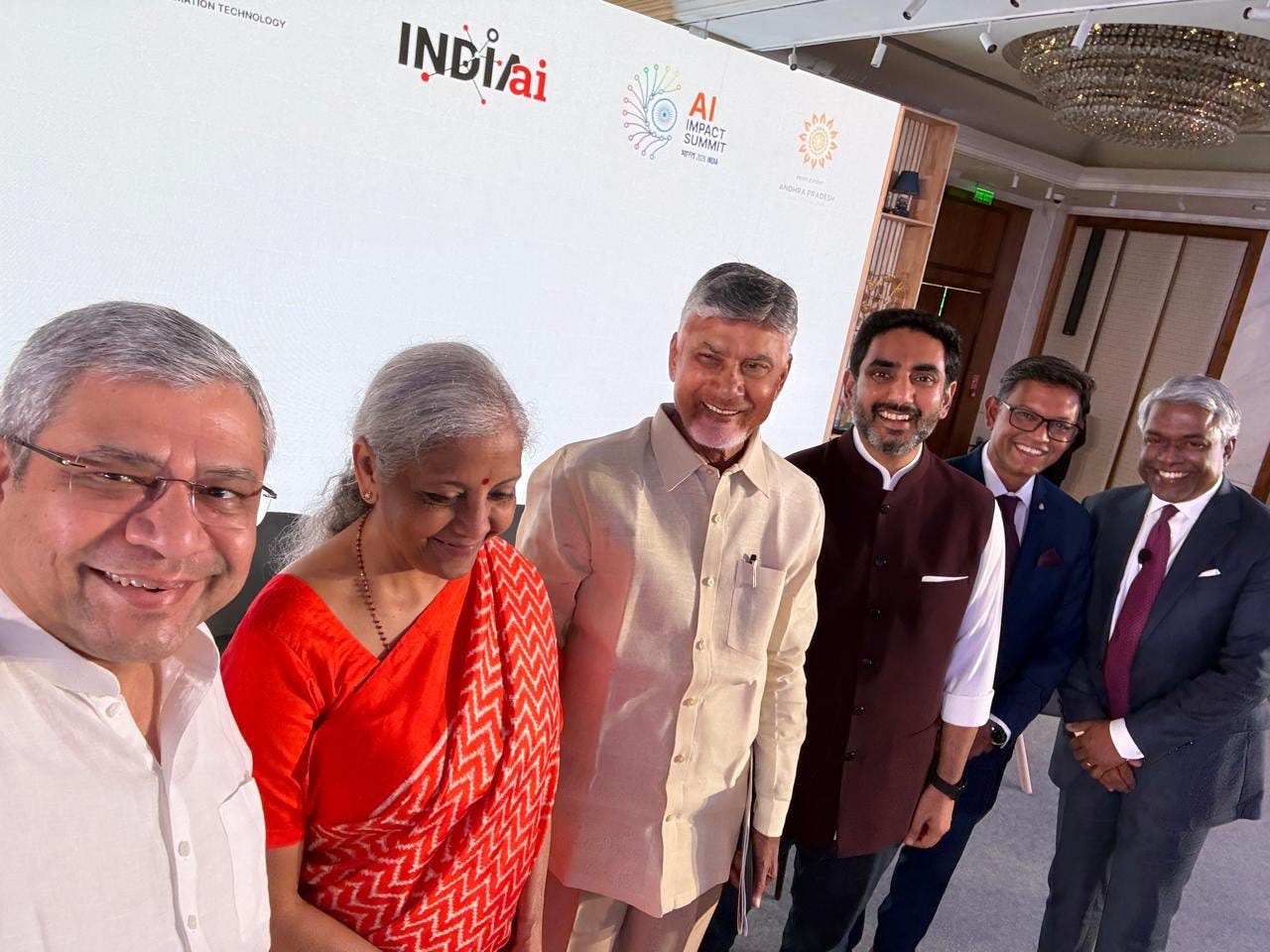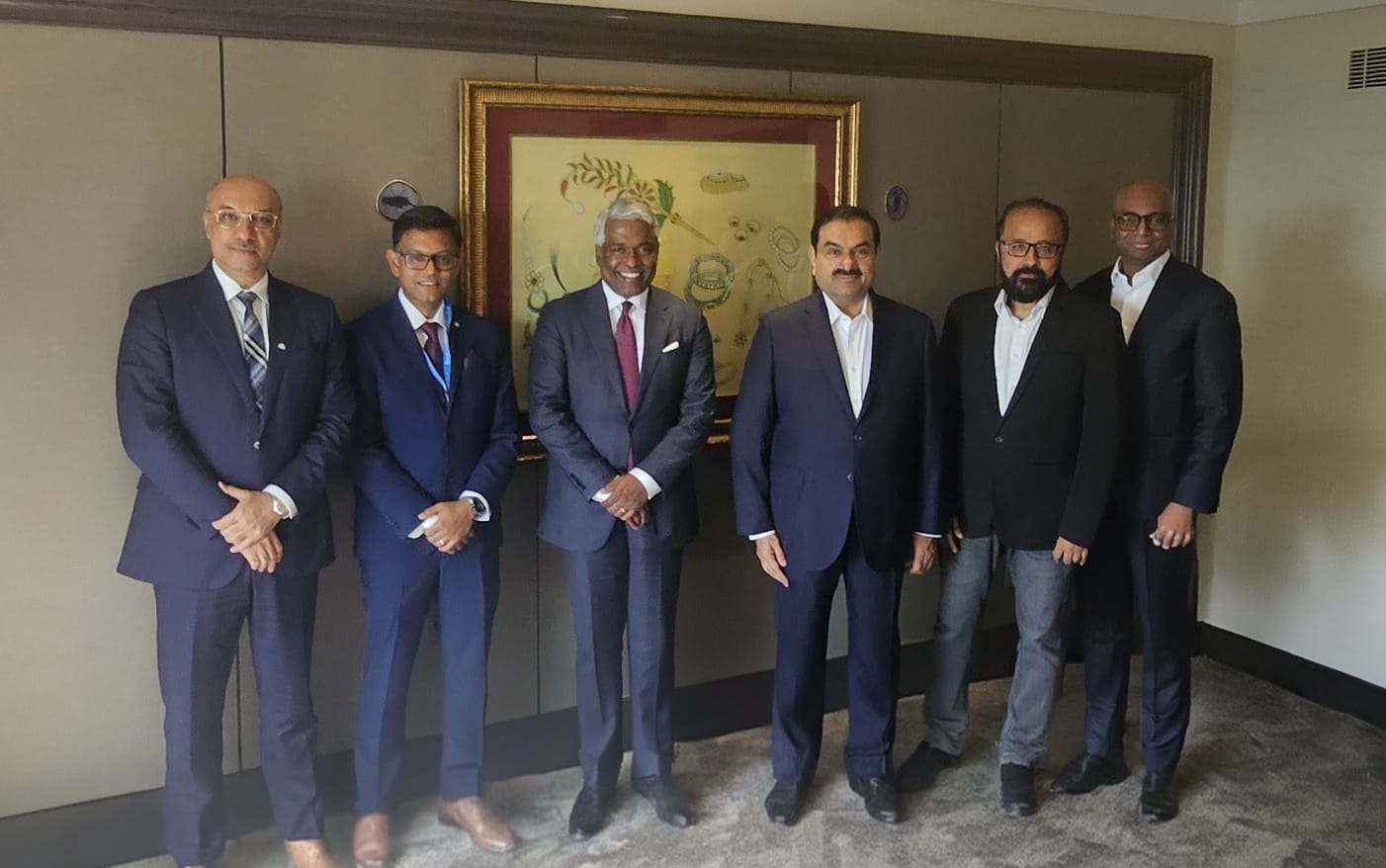Google–Adani’s $15 Billion AI Hub at Visakhapatnam Turbocharges “Viksit Bharat” and Andhra Pradesh.
A Generational Bet on India: A Time-Bound 5-Year Investment with Clear Milestones and Transformative Gains to State GDP.
Author credentials:
Karan Bir Singh Sidhu, retired IAS officer and former Special Chief Secretary, Punjab, and a Gold Medalist in Electronics & Telecommunications, offers a strategic analysis of this super-mega project—looking far beyond the headlines to unpack its national, technological and geo-strategic impact.
Google–Adani’s $15 Billion AI Hub Turbocharges “Viksit Bharat”
India stands at the threshold of a historic transformation, and today that future came into even sharper focus. The announcement that Google will invest $15 billion—its largest AI investment outside the United States—in a partnership with the Adani Group to build a gigawatt-scale artificial intelligence and data centre campus in Visakhapatnam marks a monumental leap forward. Supported by Bharti Airtel’s connectivity infrastructure, this project is not merely an economic transaction but a bold declaration of faith in India’s destiny as a global AI superpower. Over the next five years, this hub will combine hyperscale compute capacity, green energy infrastructure, and an international subsea cable gateway to cement India’s leadership in the digital economy. It is a moon-shot that converts ambition into architecture, vision into velocity, and aspiration into assurance.
Andhra@Work
At the centre of this transformation is strategic leadership—at both the national and state levels. After his conversation with Prime Minister Narendra Modi, Google CEO Sundar Pichai called this project a “landmark development,” emphasising how it will bring industry-leading technology directly into the hands of Indian enterprises and users, accelerating innovation across the country. What he truly recognised was the clarity of purpose and policy that India has demonstrated under Modi’s leadership. Equally pivotal has been the vision of Andhra Pradesh Chief Minister N. Chandrababu Naidu, who has long championed Vizag as India’s next digital powerhouse. His proactive governance, investment-friendly stance and commitment to turning the state into a global technology hub created the ground on which this project could take root. Complementing this is the role of his son, Nara Lokesh, the State’s Minister for IT and Industries, who negotiated the finer policy, taxation, and infrastructure frameworks with remarkable precision, ensuring complete alignment between global investor expectations and state capabilities. Together, this combined leadership delivers a rare harmony of national vision and state-level execution. This initiative isn’t about data centres alone. It is about building sovereign AI power in the world’s most populous democracy—a nation not content to remain a passive consumer of technology, but determined to define its future as a producer, exporter, and thought leader in artificial intelligence.
Who Contributes What—and Who Gets What
The strength of this project lies in the synergy of the partners involved. Google brings global AI expertise, cloud infrastructure, financial muscle, and access to its worldwide research networks. In return, it gains a long-term strategic foothold in the world’s fastest-growing digital market, enabling it to build India-first AI products at unrivalled scale. Adani, through AdaniConneX, will design, construct, and operate the hyperscale data centres while creating vast renewable energy capacity, transmission lines, and storage to power the hub sustainably. Adani gains a transformational expansion of its digital infrastructure portfolio and a long-duration annuity business at the heart of the AI revolution. Bharti Airtel will establish the subsea cable landing station in Vizag and build the high-capacity fibre network that connects this hub to the rest of the nation and the world. Airtel secures a place at the core of India’s digital backbone, controlling premium global network flows for decades to come.
The Government of India and the Government of Andhra Pradesh provide the most critical ingredient of all: policy clarity and trust. Without the assurance of stability, no investment of this magnitude is possible. The Modi government has ensured tax certainty, data protection laws, digital public infrastructure, and ease of doing business—proving that India is not just ready for the future but meticulously prepared for it. In return, the state and the nation gain jobs, growth, global leadership in emerging technologies, and alignment with the national vision of Viksit Bharat 2047. Most importantly, the people of India—consumers, developers, startups, and students—stand to benefit the most. They will enjoy faster, cheaper, and locally hosted AI and cloud services, lower latency, world-class products built on Indian soil, and unprecedented access to global digital opportunities.
Economic and Social Impact: Growth with Purpose
The scale of impact is staggering. At its peak between 2028 and 2032, this project is projected to create around 188,000 direct and indirect jobs every year, ranging from construction, energy, and networking to high-value roles in data science, AI operations, cybersecurity, and software development. The economic contribution is equally impressive, with over ₹10,500 crore expected to be added annually to Andhra Pradesh’s Gross State Domestic Product. The productivity spillover is estimated at nearly ₹50,000 crore across five years as allied sectors bloom around the hub. Start-ups will be magnetised by the availability of affordable AI compute and infrastructure. Multinational corporations will establish R&D and innovation labs in India. Deep tech, fintech, healthtech, agri-tech, edtech—every domain will feel the wave.
Crucially, this will unlock vast opportunities for young Indians. Major AI training pipelines and university partnerships will prepare a new generation of skilled professionals. Local ecosystems in Visakhapatnam will evolve into vibrant innovation clusters. Instead of brain drain, we will see brain gain—global talent attracted to India’s technological energy. This is not just development. It is digital nation-building.
Built on Sustainable Energy and Global Connectivity
What sets this project apart is its future-proof design. It is green by construction and global by intention. Adani will develop renewable energy and storage capacity to run the campus sustainably, minimising environmental impact while strengthening India’s power grid. This ensures energy resilience and aligns with India’s climate commitments. Simultaneously, Bharti Airtel’s subsea cable landing station will link India directly to the world’s digital superhighways. Latency will be slashed, connectivity will skyrocket, and Indian products will move across continents with seamless speed. This hub will not simply serve India—it will connect India to the world and host the world in India.
Policy Clarity: The Modi Doctrine in Action
A project of this magnitude is possible only in a country where the policy landscape is consistent, transparent, and globally competitive. Under the leadership of Prime Minister Modi, India has shed the image of bureaucratic uncertainty and embraced a pro-innovation, pro-investment philosophy. No retrospective taxation. Clear data centre norms. A well-defined framework for permanent establishment. The Digital Personal Data Protection Act, 2023, which ensures trust and security in data usage. The IndiaAI Mission, which provides strategic direction for compute, models, start-ups, and research. This powerful alignment of internal preparedness and external engagement reflects the Modi doctrine: build internal strength, project external confidence, and become an indispensable global partner.
The significance of this vision was reinforced by the presence of two key Union Ministers at the signing. Finance Minister Nirmala Sitharaman applauded the partnership as a model of India’s commitment to attracting cutting-edge FDI and emphasised that tax certainty and predictable regulation are no longer exceptions but the norm in Modi-era India. IT and I&B Minister Ashwini Vaishnaw framed the project as transformational, declaring that AI will touch every sector—governance, education, healthcare, agriculture, defence—and that India must build world-class infrastructure and skill pipelines to harness its full potential. Their presence was symbolic and strategic: the highest levels of India’s leadership stand behind this vision, ensuring that the nation is institutionally aligned for success.
Visakhapatnam: From Coastal City to AI Capital
Visakhapatnam is no random choice. It offers deep-water port access, strategic geography, robust connectivity, and a growing talent base. With this project, it will be reborn as India’s Silicon Coast—a dynamic, AI-powered hub where global companies set up labs, entrepreneurs launch start-ups, universities develop specialised curricula, and high-value jobs flourish. The eastern seaboard will become a technological growth engine to complement the traditional hubs of Bengaluru, Hyderabad, and Pune. This is decentralisation with purpose—designed to distribute opportunity and development across regions.
Why This Moment Feels Different
For decades, India was seen as the back office of the world—skilful, reliable, but not the centre of innovation. That era is over. Today, India is emerging as the brain of the world, ready to build, govern, and export intelligence. The transformation is powered by digital public infrastructure like UPI, Aadhaar, and ONDC; a thriving start-up ecosystem; deep technical talent; a stable taxation and regulatory regime; and a Prime Minister who combines visionary ambition with administrative discipline. Global CEOs are not just impressed—they are investing at scale, because India has proven that ambition is matched by execution.
What Comes Next
Over the next five years, the project will roll out in phases. Construction of data centre campuses will proceed alongside the commissioning of renewable energy grids, storage systems, and advanced fibre networks. The new subsea gateway will dramatically improve global connectivity. AI skill development programmes will embed advanced training in universities and technical institutes. Most importantly, India-hosted AI products—built in India, for India, and for the world—will begin to launch at scale. Once fully operational, this hub will give India the capability not just to participate in the AI revolution, but to shape and lead it.
The Modi Era Vision: Realised in Concrete and Code
It is poetic—and profoundly significant—that the leader who once put Hyderabad on the global technology map as Chief Minister of undivided Andhra Pradesh, is now doing it again for Visakhapatnam on an even grander scale. Chandrababu Naidu transformed Hyderabad into India’s IT capital in the 1990s and 2000s; today, with this absolutely monumental Google–Adani AI hub, he is positioning Vizag to become the AI capital of the future. This project is not just infrastructure—it is a trillion-rupee down-payment on India’s AI century. It embodies the nation’s confidence, capacity, and clarity of direction. It proves why global technology giants trust Prime Minister Narendra Modi’s internal-external policy doctrine—bold enough to dream beyond limits, disciplined enough to build at scale, and visionary enough to treat the world not as a marketplace but as a partner in progress. With Modi at the Centre and Naidu driving transformation in the state, India has entered a golden alignment of leadership and purpose. On days like this, “Amrit Kaal” is not rhetoric. It is lived reality. India is no longer preparing for the future—India is the future. And, the future is here, now!




Hope the Chief Ministers of Punjab, West Bengal, Kerala learn something from Chandrababu Naidu.